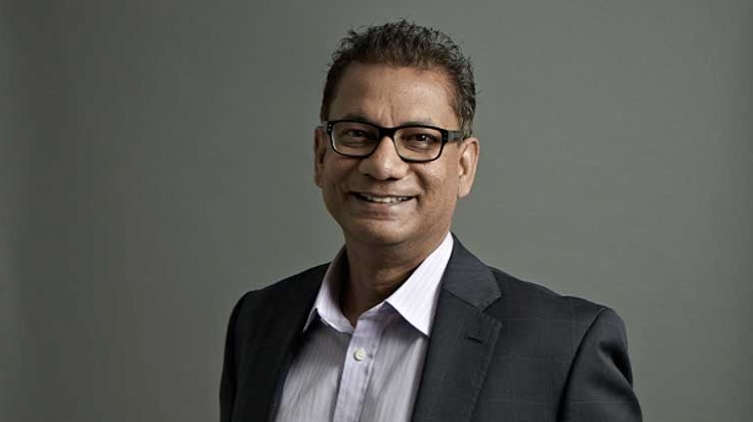Johann Xavier is Chief
Financial Officer for Saatchi & Saatchi's Asia-Pacific region. A Canadian of Sri Lankan descent, he is based in Singapore where
he is a CFO in a region including 15 countries and 60 percent of the world’s
population.
The basis of this article is a
speech Johann gave to The Economist CFO Conference in March 2014 in London.
This op-ed first appeared in Entrepreneur
on 31 March.
The May
1983 Harvard Business Review carried a provocative article by
Theodore Levitt titled “The Globalization of Markets,” which proposed that all
goods and services provided by multinational corporations should be
homogenized.
He wrote, "The global
competitor will seek constantly to standardize his offering everywhere. He
will digress from this standardization only after exhausting all
possibilities to retain it, and he will push for reinstatement of
standardization whenever digression and divergence have occurred. He
will never assume that the customer is a king who knows his own
wishes."
Today, there exists a new and more
promising form of globalization, one based on cultural respect, sensitivity and
inclusion. Diversity has passed from the legal obligation phase to
enlightenment -- where being different is embraced as positive.
Economic power now comes from
everywhere. New economies with aspirational middle classes and new elites have
diversified the world in radical ways. In addition to BRICs (Brazil, Russia,
India and China) we have MINTS (Mexico, Indonesia, Nigeria, Turkey) and
CIVETS (Colombia, Indonesia, Vietnam, Egypt, Turkey and South Africa). The
increase in purchasing power, health, housing and education standards, and
access to technology, coupled with the rise of millennials, has fuelled new
paradigms. Employees are highly mobile; consumers are widely diverse. The
matrix of daily business may involve people from Shanghai, Mumbai and Dubai.
Diversity is no longer about the West and the Rest.
Diversity encompasses more than
ethnicity. Representation of women, recognition of gays, inclusion of people
with disabilities and drawing on the contributions of introverts -- these are
all documented as having a positive effect on a company's culture and performance.
Intercultural relations go to the
heart of organizational effectiveness, enhanced productivity and innovation and
optimal customer relationships. Premiums accrue to companies that are adaptive
and inclusive. I call this new globalization “common sense.”
There are a set of desires that cut
across cultures. People across the world have common everyday aspirations,
whether it is keeping their teeth clean and bright, their shirts fresh and
sharp. But rather than being served Levitt’s one-size fits all, workers and
shoppers want their individuality recognized. Every person has a unique
microculture, something this era of Big Data is helping companies to
understand.
There are steps to take for
executives facing diverse workforces and consumer bases:
Cultural dexterity is learnable. Do not think that someone who
successfully navigates intercultural relations does so because they are a
“people person.” Everyone can and should be adept at interacting with people
from other cultures. Do research. Be curious. Don’t make assumptions. For
organizations, diversity works when there is commitment from the top, education
programs and appointments made of people who are experienced at managing change
across cultures.
Reach out and connect. Successful cultural operators can,
like a skilled diplomat, relate to people of many persuasions. This does not
mean burying your personality behind a mirror, but it does call on the full
range of communication skills: being a good listener and observer, asking
questions as well as showing empathy and reciprocity.
Make it personal. The process of building trust will
be layered by your commitment to being collaborative rather than competitive,
inspirational rather than authoritarian, inclusive rather than hierarchical and
seeking relationships not just transactions.
Keep intercultural relations active. Japanese people practice kaizen
(meaning “good change”), which refers to a process that involves everyone in
the company. Every leader should encourage their colleagues to seek
opportunities to diversify their company on a daily basis.
Tell stories. Stories are universal and through
them you can express purpose and a point of view. The details of stories change
with the times, but their essence remains the same. Cohesive messaging frames
your presence.
When I was managing an acquisition
in South Africa, I walked into a boardroom at the height of negotiations and –
picture this – there were representatives from the Black Economic Empowerment Commission,
senior people who had lived through the apartheid era; an investor who was
Jewish; my quintessentially American boss; a very French acquirer and the CEO
who was a gay woman. Oy vey! My role was to bring
everyone together and it drew on every ounce of my chameleon self. The deal was
done, and it thrives to this day.














